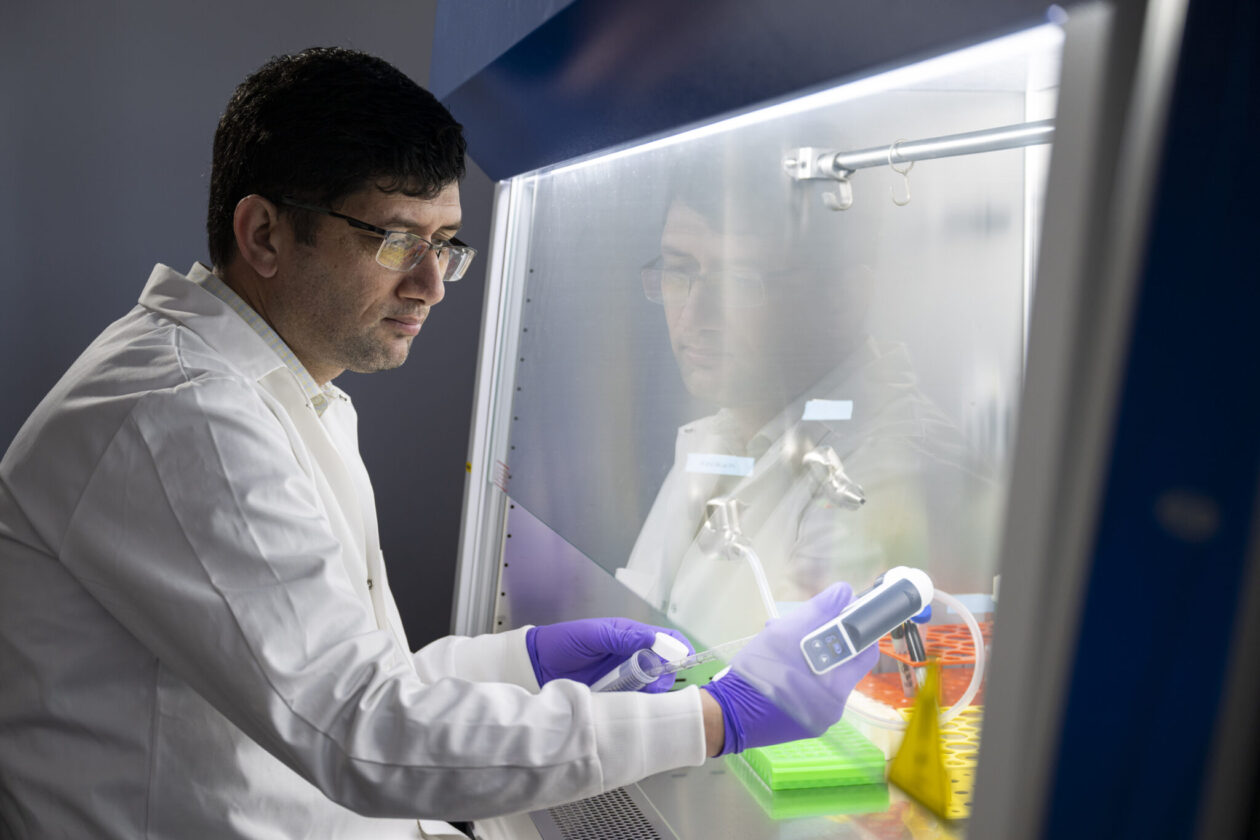Seeing the ear’s battery: S&T research targets hearing loss diagnosis, treatments
Posted by Greg Edwards

Dr. Parveen Bazard works in his laboratory in S&T’s Bertelsmeyer Hall. Photo by Blaine Falkena/Missouri S&T
It’s a common scene: Someone speaks, but listeners with hearing loss may find themselves asking “What?” or “Huh?” again and again. For millions of people, this happens every day, and it’s something Dr. Parveen Bazard, a Missouri S&T researcher, hopes to improve.
Bazard, an assistant professor in S&T’s Linda and Bipin Doshi Department of Chemical and Biochemical Engineering, was recently awarded a grant from the American Otological Society for his research on non-invasive methods to image the inner ear’s electrical and physiological activity.
“Everyone should be able to enjoy the gift of sound, but that’s unfortunately not the case,” Bazard says. “We need better ways to diagnose and treat hearing problems. There isn’t currently a safe or practical way to measure the voltage in the inner ear, but I’m hopeful my research can change that and ultimately lead to better options for people with hearing loss.”
Bazard says the inner ear contains sodium and potassium ions that create a small electrical voltage called the cochlear battery. This voltage allows tiny hair cells in a part of the ear called the cochlea to convert sound vibrations into signals the brain can process.
“It is likely that a drop in voltage plays a critical role in hearing loss, whether it’s caused by aging, noise exposure or other factors,” Bazard says. “But we don’t yet know what typical voltage levels are in humans. If we can measure that, we’ll be one step closer to understanding the electrical mechanisms behind hearing loss and how we might prevent or even reverse it.”
For this project, Bazard is collaborating with Washington University in St. Louis and using MRI machines, PET scanners and nuclear imaging tools to detect the voltages in a murine model.
“The imaging technology itself isn’t new, but it needs to be applied in a specific way to detect the signals deep inside the inner ear,” he says. “Designing protocols that can distinguish these meaningful signals from everything else going on in that area is extremely challenging. This has never been done before, but with careful experimentation and validation, I hope to make it happen.”
Bazard has also conducted research projects funded by the National Institutes of Health and the American Hearing Research Foundation focused on potential drugs to treat hearing loss.
For more information about S&T’s chemical and biochemical engineering programs, visit chbe.mst.edu.
About Missouri S&T
Missouri University of Science and Technology (Missouri S&T) is a STEM-focused research university of over 7,000 students located in Rolla, Missouri. Part of the four-campus University of Missouri System, Missouri S&T offers over 100 degrees in 40 areas of study and is among the nation’s top public universities for salary impact, according to the Wall Street Journal. For more information about Missouri S&T, visit www.mst.edu.
Currently dealing with an ear issue and recently told by ENT a hearing aid would help. This “study” and research sounds exciting. Keep me posted. Wishing you success.
Thank You for the hearing research.
I’m a MSM Rolla ‘62 C.E grad with hearing aids I can hear; however, I cannot understand what’s being said.
Background noise really dampens the hearing process .
Appreciate your effort and good luck,
Tom
Louisville, KY.